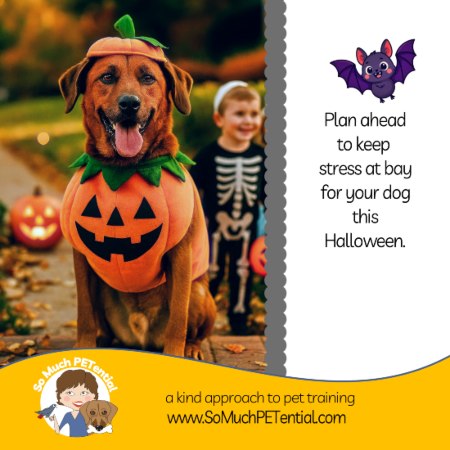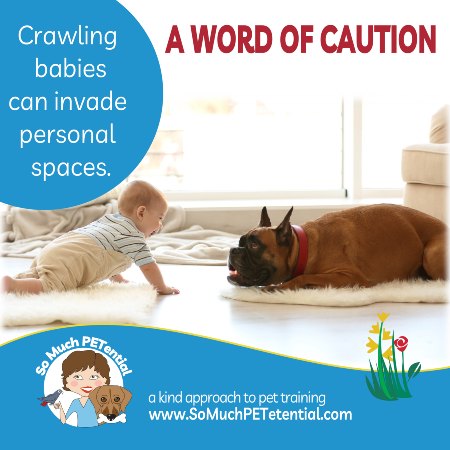Furthering my passion for helping to strengthen the relationship between families and their dog, a few years ago, I pursued and graduated from a 13-week program to become a licensed Family Paws parent educator. A new baby, toddler or young child can be stressful for the family dog. Family Paws helps parents of infants and toddlers anticipate, prepare and establish guidelines that lead to increased safety and decreased stress for all family members. Why did I become a dog trainer, and why did I pursue the Family Paws license? Family Paws featured me in their social media with this interview. Read it below.
This is such important work helping to prepare families with a dog for life with a baby or toddler.  I’ve seen first hand how stressful this time can be when the family includes a pet. Supporting them to plan for
I’ve seen first hand how stressful this time can be when the family includes a pet. Supporting them to plan for
FP: Why/how did you become a dog trainer?
Lisa Desatnik: Before pet training, my long-time career had been in public relations (and some media) working on projects and campaigns to unite the community around causes that spoke to me. Much of that had to do with improving and strengthening lives.
I began studying Applied Behavior Analysis (ABA) as it relates to pets (specifically parrots back then) over 20 years ago because of a personal issue I had with my own animals. I really had no idea it would lead me here. I was just a pet owner who did not like the negative strategies I saw online about changing behavior. I wanted to do better. That is when fate stepped in and introduced me to my first teacher/mentor, Dr. Susan Friedman (a worldwide pioneer who brought ABA to the forefront in the care of captive and companion animals), who inspired my thirst for knowledge.
I kept studying, eventually earning my first certification. I began writing a monthly column in a local magazine (Hyde Park Living and expanded to Indian Hill Living), that I am still doing. That column has expanded to include another magazine and a regular guest appearance on a local television program, WCPO’s Cincy Lifestyle. I also have been doing community talks on behavior.
Little by little, I began doing more training alongside my public relations. It was in 2020, during the COVID pandemic that I took the leap to pursue training full time.
While pet training is very different from my previous career, its similar in that it is really helping me fulfill a passion for helping others.
FP: What made you want to specialize your dog training in this niche (working with young families that include a dog)?
Lisa Desatnik: First, I know how important my own family pets were to me growing up. Our dog was my best friend. Losing her was extremely difficult. Pets have always been part of my life, as an adult too. Through stress, sadness and joy, they have been there for me. I know how valuable that relationship is to individuals and families.
While I wasn’t able to have my own children, I enjoy teaching, mentoring and bringing out the best in children. I had developed a kids’ class on dog training and curriculum years ago – now called My Dog, My Best Buddy – that teaches children how to be a good dog friend, and safe/fun dog teacher. (I am bringing that back this fall.) When I have a family client that includes young kids, if those kids want to learn, I like to include them.
I get why parents want their dog to be that friend to their young child. I get why their dog is such an important family member. Yet I often see, dogs that are stressed, adults who are stressed, when that dynamic is challenged. I want to do what I can to help these families see success.
FP: Tell us about your hobbies/interests.
Lisa Desatnik: Oh gosh, I have SO MANY! Lately the pickleball court has become my happy place. I love the sport. I also enjoy dancing, hiking, laughing with friends, good theatre and concerts. I am a writer/communicator and wish that I had more time to pursue that. In addition to my pet behavior blog, I have a Good Things Going Around blog. I had to give the later up to pursue training but I hope to get back to it on a limited scale at some point. I loved being able to give exposure to people and causes worthy of being noticed (and hopefully inspiring others).
FP: What is your favorite dog training testimony or story to share about kids and dogs?
Lisa Desatnik: I love it when kids tell me, or I hear about them telling their parent or friends how their dog was feeling. I also love it when kids want to show me with pride, what they have taught their dog. It is so beautiful when we can inspire kids to be their pet’s advocate.
The other day I paid a second visit to a home of expectant parents. On my first visit, they were stressed with their dog’s behaviors (not just related to the upcoming baby). They were feeling overwhelmed. We talked. We planned. We created different strategies. When I arrived for my second visit, I was welcomed with a smiling client who said she now is feeling so hopeful. The change was so dramatic. I had a lump in my throat. It was one of those occasions that reminded me why I do this work.
(NOTE: You can read testimonials on any of my training pages and testimonial page.)
FP: What is a parting tip – one tip, tidbit, piece of knowledge or advice that you wish parents knew about relationships or interactions between dogs and babies or children?
Lisa Desatnik: Management and active adult supervision is just so very important for safety, minimizing stress, teaching positive associations. In order to do that effectively, you’ve got to know how your dog (and child) are feeling and when redirection should happen. Remember too that all of you have needs. Part of being successful is helping all of you to ensure your needs are being met. Never be afraid to reach out for support.







